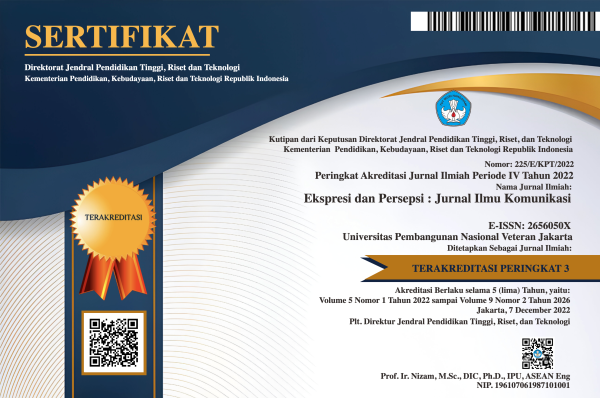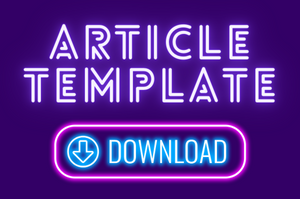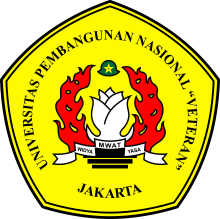In-Depth Analysis of Patient Experiences Through Health Communication
DOI:
https://doi.org/10.33822/jep.v8i1.9443Keywords:
Patient Experience, Patient Satisfaction, phenomenology, health communicationAbstract
Communication in the health industry can influence patient satisfaction. Patient satisfaction is an essential factor that can stimulate changes in healthcare quality through temporary patient-centred policies that communicate patient engagement in treatment decisions. However, patient satisfaction is challenging to define broadly, and satisfaction surveys do not often represent patient expectations. Numerous hospital customer satisfaction studies do not guarantee the outcomes of customer satisfaction questionnaires that deeply examine patients' perspectives on their intended goals or objectives. This study will examine how patient communication experiences, particularly for inpatients and hospital services, might shape expectations through data gathering via interviews and focus group discussions. This research utilizes communication experiences as the object of this research and the perspective of hospitalized patients or their families as the subject. Data was collected through interviews and focus group discussions (FGDs) to acquire information directly from the experiences of patients or patient families in four public hospitals in West Java Province with levels B and A. This study employs a qualitative analysis method that integrates a phenomenological approach and theories, using the Press Geney Experiment Patient Experience Survey as an analysis tool. The study's findings demonstrate that providing patients with relevant information at the right moment can make them feel more at ease and optimistic about their treatment and build trust in healthcare facilities.
References
Al-Abri R, Al-Balushi A. Patient satisfaction survey as a tool towards quality improvement. Oman Med J. 2014;29(1):3–7. https://doi.org/10.5001/omj.2014.02.
Anhang Price R, Elliott MN, Zaslavsky AM, Hays RD, Lehrman WG, Rybowski L, et al. Examining the role of patient experience surveys in measuring health care quality. Med Care Res Rev. 2014;71(5):522–54.
Black, N., & Jenkinson, C. (2009). Measuring patients’ experiences and outcomes. Bmj, 339. Clark, P. A. (2006). Patient satisfaction and the discharge process: Evidence-based best practices. Hcpro Inc. Retrieved from https://archive.org/details/patientsatisfact0000clar. Creswell, J. W., & Creswell, J. D. (2018). Research design: Qualitative, quantitative, and mixed methods approaches (5th ed.). SAGE Publications.
Dewi, M. K., & Novianti, R. (2021). Peningkatan Pelayanan Kesehatan pada Rumah Sakit Umum Daerah dalam Rangka Pelayanan Kesehatan BPJS. Jurnal Administrasi Kesehatan Indonesia, 9(1), 1-11. doi: 10.20473/jaki.v9i12021.1-11
Dora, M. S., Ayuni, D. Q., & Asmalinda, Y. (2019). Hubungan Komunikasi Terapeutik Perawat Dengan Kepuasan Pasien. Jurnal Kesehatan, 10(2).
Ekatjahjana, Widodo. 2018. Peraturan Mentri Kesehatan” Kementrian Kesehatan, Republik Indonesia
Haskard Zolnierek KB, Di Matteo MR. Physician communication and patient adherence to treatment: a meta-analysis. Med Care. 2009;47(8):826–34.
Hawthorne G, Sansoni J, Hayes L, Marosszeky N, Sansoni E. Measuring patient satisfaction with health care treatment using the short assessment of patient satisfaction measure delivered superior and robust satisfaction estimates. J Clin Epidemiol. 2014;67(5):527–37. https://doi.org/10.1016/j.jclinepi.2013.12.010.
Kementrian Kesehatan, 2022, Permenkes No. 30 Tahun 2022 Tentang Mutu Yankes, Kementrian Kesehatan, Republik Indonesia. https://yankes.kemkes.go.id/unduhan/fileunduhan_16668 54298_554914.pdf
McCabe C. (2004). Nurse-patient communication: an exploration of patients' experiences. Journal of clinical nursing, 13(1), 41–49. https://doi.org/10.1111/j.1365- 2702.2004.00817.x
NHS. (2013). The patient experience book. NHS Institute for Innovation and Improvement. Retrieved from https://www.england.nhs.uk/improvement-hub/wp- content/uploads/sites/44/2017/11/Patient-Experience-Guidelines.pdf.
Rohimakumullah, M., & Abdurrahman, M. (2021). Pola Komunikasi Keluarga Sebagai Family Caregiver Isolasi Mandiri Covid-19. Dialektika, 8(2), 197-207. https://doi.org/10.32816/dialektika.v8i2.1976
Schoenfelder T, Klewer J, Kugler J. Determinants of patient satisfaction: a study among 39 hospitals in an in-patient setting in Germany. Int J Qual Health Care. 2011;23(5):503–9.
Schutz, Albert. (1967). The Phenomenology of The Social World. Evanston: Northwestern University Press.
Sitzia J, Wood N. Patient satisfaction: a review of issues and concepts. SocSci Med.1997;45(12):1829–43.
Sutcliffe, K. M., Lewton, E., & Rosenthal, M. M. (2004). Communication failures: an insidious contributor to medical mishaps. Academic medicine, 79(2), 186-194.
Wolf J, Niederhauser V, Marshburn D, LaVela S. Defining patient experience. Patient Experience J. 2014;1(1):7–19.
Zhang, Y., Zhang, Y., Hu, D., Liu, Y., Ding, X., Xu, K., ... & Wang, J. (2023). The experiences of emergency hospital care among adolescents and young adults with self-harm: A systematic review and thematic synthesis of qualitative evidence. International emergency nursing, 69, 101297.
Downloads
Published
Issue
Section
License
Copyright (c) 2025 Muhammad Al Assad Rohimakumullah, Hanna Wisudawaty, Muhammad Sufyan Abdurrahman, Haria Saputry Wahyuni, Zayyin Abdul Quddus

This work is licensed under a Creative Commons Attribution-NonCommercial 4.0 International License.














